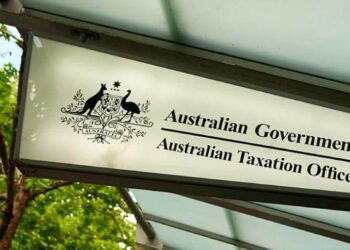HLB Mann Judd Sydney wealth management partner Jonathan Philpot said that, for many Australians, owning a negatively geared investment property can be considered as a tax-effective way to grow their investment wealth and reduce their personal tax, but it may not actually be the best way forward.
“Using gearing to build wealth can be risky, and negative gearing into property carries a higher risk without a guarantee of a greater return opportunity,” Mr Philpot said.
“A negative gearing strategy can pay off if the value of the property appreciates enough over time to deliver a strong capital gain, but this isn’t always the outcome. And the capital costs of running and maintaining an investment property can be high.”
A lot of investors often think about the fact that super is locked away and less accessible when compared to other forms of investment.
“While it is true that superannuation is locked away until retirement — or at least age 60 for most — property is far from an easily accessible asset,” he noted.
“Regardless of how wealth is built over a lifetime, there is no doubt that in retirement the most tax-effective place for wealth to be held is within super.”
Another aspect that needs to be considered, he said, is the restricted concessional contribution limits of $25,000 a year that now apply.
“People can no longer deposit a large lump sum into super, but rather need the benefit of time to build up their superannuation balances,” Mr Philpot said.
“The smart strategy is to begin this from the age of 40, with the aim of building a super fund up to the $1.6 million balance cap limit.”
Mr Philpot used an example of a 40-year-old professional, Sarah, earning an income of $100,000 a year and with a superannuation balance of $100,000.
Assuming Sarah’s super generates an average return of 7 per cent per annum and that her salary grows by 2 per cent a year, her balance through compulsory super alone would increase to $718,683 by the time she is 60, he explained.
“However, Sarah is also in a position to save additional funds for the future and has spare cash flow of $12,500 a year. She considers the option of negatively gearing into property versus making additional annual contributions to super,” he said.
If Sarah decides to buy a $500,000 investment property that is 100 per cent geared, he said, with the loan secured against her existing home, she would have upfront out-of-pocket expenses of about $20,000 for stamp duty and legal costs.
“Sarah could expect to earn rental income of around $15,000 or 3 per cent per annum on the property, less annual expenses of about $5,000, giving her a net income of $10,000 per annum,” he explained.
“Assuming Sarah has an interest-only loan at 4.5 per cent per annum, her interest repayments would be $22,500 a year. Sarah would need to put her $12,500 towards the loan repayments.
“Sarah’s taxable income would be reduced by the $12,500 income loss on the property, resulting in a personal annual tax saving of $4,763.”
Assuming the property’s value would appreciate by an average of 4 per cent per annum, it would be worth $1,095,562 in 20 years’ time, he said.
“If Sarah sells the property at age 60 after ceasing work, she will have a capital gain of $556,128. After repaying the principal of the loan and allowing for tax and other expenses, Sarah would have cash available of $482,091. When added to her superannuation balance, of $718,683, her overall investment wealth is $1,200,774,” Mr Philpot said.
“However, only $718,683 of the wealth is held within super and so would be relying on the current contribution rules to still be in place, and it would take her a number of years to contribute all of the $482,091 into super.”
Alternatively, he explained that Sarah could invest her $12,500 into superannuation by making an additional concessional contribution each year. She could then claim a personal superannuation deduction which would also result in a personal annual tax saving of $4,763.
“The $20,000 that she would have spent in upfront property costs could also be contributed to her superannuation. By age 60, Sarah’s superannuation balance would be $1,209,011,” he said.
Mr Philpot also noted that an investment property would most likely need major repairs and maintenance work, which hasn’t been factored into the calculations.
It’s also unlikely that she would have an interest-only loan for the entire 20-year period as banks tend to limit the duration of the interest-only period, he added.
While Labor’s negative gearing and CGT discount changes are off the table for now, he also cautioned that this could change in the future.


